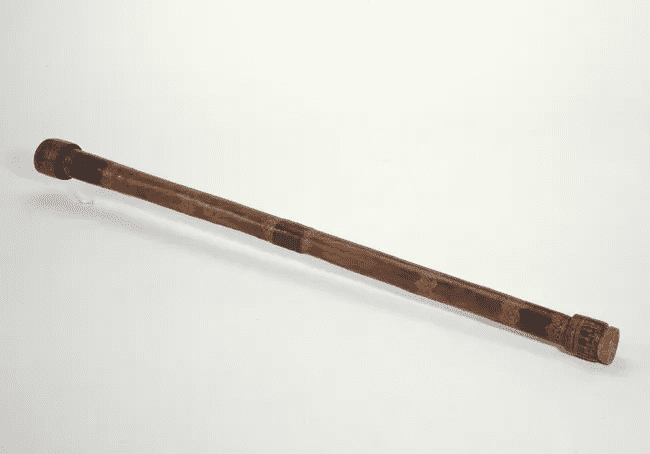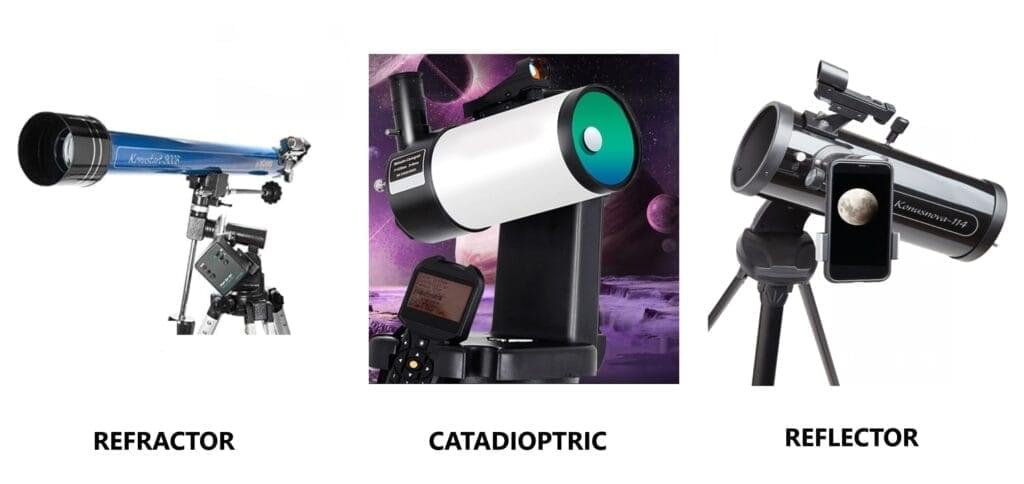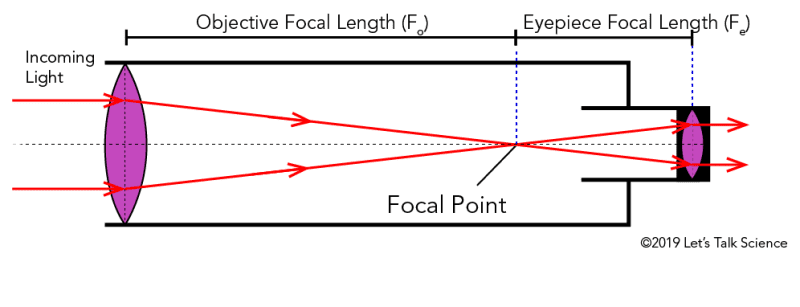How Telescopes Work : Part 1 Basics and Types
All of you who are interested in astronomy wish to have your telescope so that you can observe for yourself what you see on social media and various astronomical forums, but along with that, important questions arise in the mind:
- How does a telescope work?
- Where to buy a telescope?
- How to buy?
- Which one to buy?
- How much will you get?
- Can it make images?
- How far can the telescope see, and what astronomical bodies are observable?
In this article, we will introduce the telescope, how it works, and some basic information related to it. We will read and learn in such a way that the above questions can be quickly answered, making it easy for you to understand the concept of the telescope and choose the one that best suits your needs.
If I say that people thousands and thousands of years ago could see a sky as beautiful as it was visible to the naked eye, we cannot see such a sky today. While the pace of human progress is increasing and possibilities are being made possible, we are closing our eyes to the pollution spreading in our environment.
Due to this, today, the sky is so polluted with gas, dust, and light pollution that fewer than 100 stars are visible out of thousands in urban areas. For astronomical observations, one has to turn towards mountainous regions or deserts away from urban areas.
Indeed, progress is necessary for the distant future to be made accessible, but it is also essential to control pollution along with it.
The word “Telescope” means a distant viewer or a tool that allows you to see foreign objects better than the naked eye, both during the day and at night, and enables the observation of celestial bodies.
The first telescope was attempted in 1608 by a Dutch glassmaker, Hans Lippershey, which could only zoom up to 3 times. He used a magnifying glass to make a telescope to see things larger and closer. He needed to create an improved telescope.

In 1609, Galileo’s telescope creation turned the tide, and it remains popular today. His built telescope could zoom up to 8 times initially, later improving to a zoom of 20 times.

HOW DOES A TELESCOPE WORK?
Before we proceed, we need to know how something is revealed to us. Until light emitted from or reflected by an object reaches our eyes through collision, we cannot see that object. The appearance or display of an object means that light is emitted or reflected from it, reaching our eyes through collision.
After that, our eyes, in a compassionate manner, pass through various layers and stages, transmitting the image through optic nerves (the connection between the eyes and the brain). Thus, it became clear that our eyes only see light.
Similarly, a telescope will only reveal illuminated objects, or light collides with and reaches the telescope. Telescopes utilize lenses or mirrors to enhance magnification of incoming light or image.
For this purpose, there are two major types of telescopes:
1-Reflecting Telescopes: (These telescopes use mirrors to Collect and focus light)
2-Refracting Telescopes: (These telescopes use lenses to Curve and focus light)
In addition, there is a third type of telescope known as a Catadioptric, often referred to as a compound or hybrid telescope, combining elements of both refracting and reflecting telescopes. It combines lenses and mirrors to achieve a compact and versatile design.

Many people also mention two more types of telescopes: computerized and automated. However, this is different. The telescope is manual, while the tripod stand underneath it can be computerized or automated.
I will explain the introduction of the tripod below. Based on the telescopes you have seen or used, they will either be refractive or reflective. Both types have unique and significant characteristics in their own right.
However, in addition to these, there is a third type of telescope, known as a catadioptric, which will be mentioned later. For now, let’s discuss the two main types of telescopes. Before identifying the differences between them, let’s note some points.
- 1-Diameter
- 2- Focal length
- 3- Eyepiece
- 4- Focal point
- 5- Lense (Refractive telescope)
- 6- Mirror (Reflective telescope)
- 7- Mount
1- DIAMETER OF TELESCOPE
If a telescope is refractive, it has a convex lens in front that gathers incoming light and focuses it. On the other hand, if a telescope is reflective, it has a glass called the primary mirror in front, which reflects incoming light onto a secondary mirror.
Both types, whether refractive telescopes with lenses or reflective telescopes with glass are referred to as the telescope’s “aperture” or “objective diameter.” The objective lens or mirror, which allows light to enter the telescope and form the observable image, is also known as the aperture.
The larger the telescope’s aperture diameter, ranging from approximately 60 millimeters (about 2.3 inches) to 354 millimeters (14 inches), the more light it gathers. A larger aperture allows for a greater field of view, and faint objects can be observed more effectively.
Telescopes with aperture diameters beyond 354 millimeters are rare among individuals due to their size and weight, making them difficult to transport without substantial equipment.
Binoculars (two-eyed small telescopes) often have aperture diameters ranging from 20 to 70 millimeters. More giant aperture binoculars are rare, and most people use binoculars with diameters between 20 and 50 millimeters.
If a telescope model is labeled as “76700,” its aperture diameter is 76 millimeters, and its focal length is 700 millimeters. In simpler terms, the telescope’s front or mouth is called its aperture.
2- FOCAL LENGTH OF TELESCOPE
If a telescope is refractive, the light passing through its lens converges at a specific focal point. On the other hand, if a telescope is reflective, the light falls from the primary mirror onto the secondary mirror, and from there, it converges at the focal point.
The distance the light travels from entering the telescope to reaching the focal point is called the focal length. The focal length can range from 350 millimeters to 4000 millimeters. Telescopes with focal lengths beyond this range are highly specialized and used for research.
The greater the focal length of a telescope, the more magnification it can achieve, allowing for closer observation of celestial bodies.
In simpler terms, the length of a telescope, also known as its focal length, is the distance it takes for the light to reach the focal point. For example, a telescope with a focal length of 1000 millimeters (1000 millimeters = 1 meter) would be 1 meter long, equivalent to the length of your arm.
It’s worth noting that reflective telescopes tend to have longer focal lengths. Still, their physical length is shorter – further clarification on reflective telescopes will be provided in the explanation of reflective telescopes.
3- EYEPIECE OF TELESCOPES
An eyepiece, also known as a convex lens, is attached to a telescope to view images. The light passing through the telescope’s diameter converges at the focal point, from where it is brought to your eye by the eyepiece.
The journey from the focal point to the eye is concise, so eyepieces are small. The eyepiece gathers the concentrated light and magnifies or enlarges it. The distance from the focal point to the eye is the eyepiece’s focal length.
The collected light can be spread or enlarged by manipulating the eyepiece. The work of the eyepiece is to focus the light from the focal point to your eye.
The location where the eyepiece is attached to the telescope can be on the opposite side of the telescope’s mouth or the top of the telescope. You may have observed that people place their eye on the part of the telescope where the eyepiece is attached while observing; that part is the eyepiece.
The standard size of the region where the eyepiece is attached to the telescope is 1.25 inches. In some telescopes, this size can also be 2 inches. Remember, this site is not for the eyepiece but for the place where the eyepiece is attached.
Eyepieces can have a focal length ranging from 40 millimeters to one millimeter. You might think a 40-millimeter eyepiece would display a larger image, but the opposite is true. A 40-millimeter eyepiece gathers more light and produces a lower magnification image.
While a smaller millimeter eyepiece captures less light but generates a larger magnified image. In other words, if you want to observe the complete picture of the Moon, you need to use a larger eyepiece like 25mm, 20mm, or 40mm.
However, if you want to zoom in on a specific crater or mountain range on the Moon’s surface, you must use a smaller eyepiece like 25mm, 12mm, 9mm, or 4mm.

Think of it this way:
Larger eyepieces (e.g., 40mm) provide a wider field of view and are suitable for observing larger celestial objects. Smaller eyepieces (e.g., 25mm, 12mm, 9mm, 4mm) offer higher magnification, ideal for detailed observation of specific features on celestial bodies, such as craters or mountains on the Moon.
Assume the image you are viewing has a 100x zoom. Suppose the focal length of your telescope is 1000 millimeters, and you have attached a 10-millimeter eyepiece.
Divide the telescope’s focal length by the eyepiece’s focal length, which results in 1000 ÷ 10 = 100. Therefore, you are currently observing an image with 100x zoom.
You only need to change the eyepiece attached to the telescope to further magnify the image. Initially, a 10-millimeter eyepiece was used. Remove it and replace it with a 5-millimeter eyepiece.
Now, the image will be more magnified, reaching 200x zoom. By changing the eyepiece, you can increase the zoom and achieve the desired level of magnification. The telescope remains the same; everything is identical except for the eyepiece change, allowing you to obtain the desired zoom level.
Note: It is not always the case that you can attach any eyepiece to every telescope; rather, it is observed based on the telescope’s focal length and diameter, determining the minimum eyepiece that can be used.
If the telescope has a diameter of 50mm and a focal length of 400 millimeters, then you can use a minimum of a 4-millimeter eyepiece, which provides 350x zoom. (1400 ÷ 4 = 350x)
If you want to use a small eyepiece to see a highly zoomed image, remember that the celestial object you observe should be sufficiently bright. As mentioned earlier, a smaller eyepiece magnifies the image more but shows less light.
FAQS
How do telescopes work (step-by-step)?
Telescopes collect light (or other electromagnetic waves) using a lens or mirror and focus it to form a clear image. The focused light is magnified by an eyepiece so you can see distant objects in detail.
How do telescopes work (physics)?
They use the principles of optics. Light is bent (refraction) through lenses or reflected by mirrors to bring it to a focus point. This concentrated light reveals details otherwise too faint or small to see with the naked eye.
How do telescopes work (for kids)?
A telescope works like a big magnifying glass! It uses lenses or mirrors to gather lots of light from faraway stars and planets and makes them look bigger and closer so you can see them better.
How do refracting telescopes work?
Refracting telescopes use a large curved lens (objective lens) to bend light and focus it into an image. Then, the eyepiece lens magnifies the image for your eye to see.







